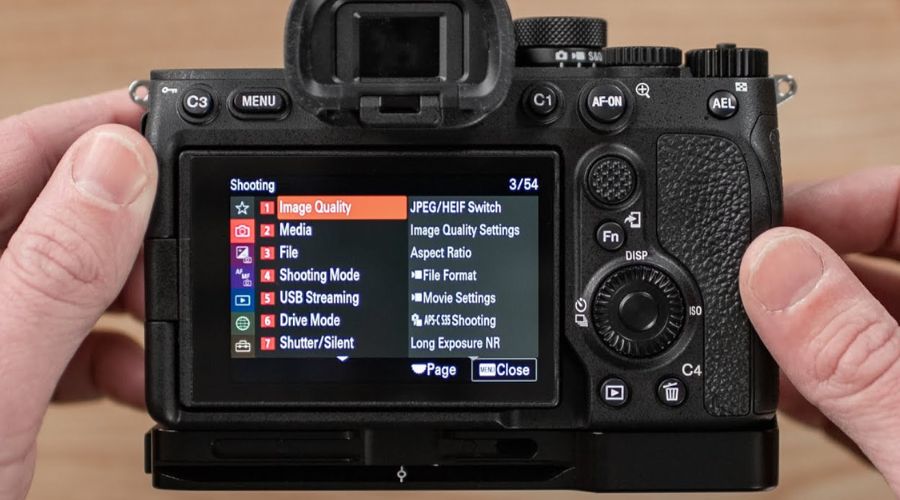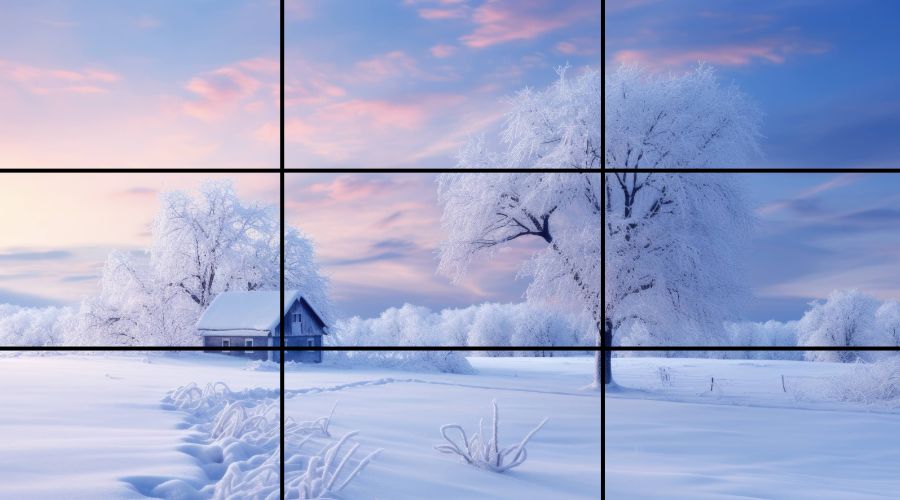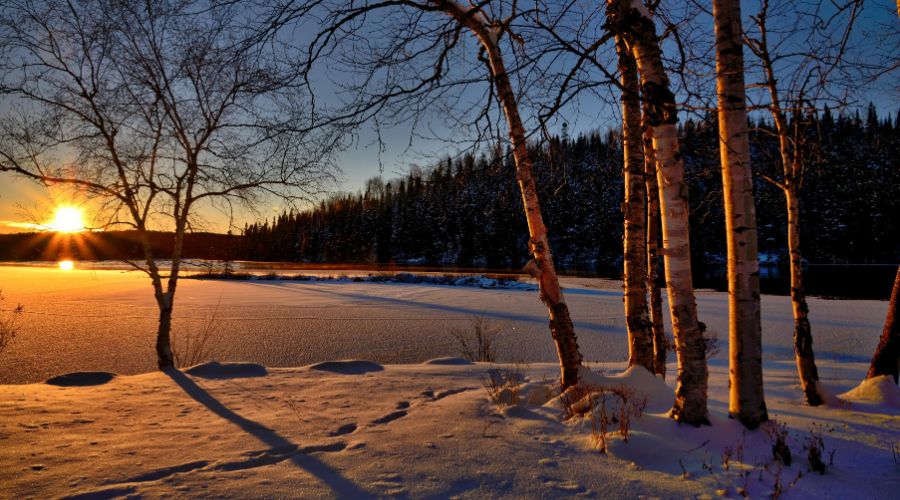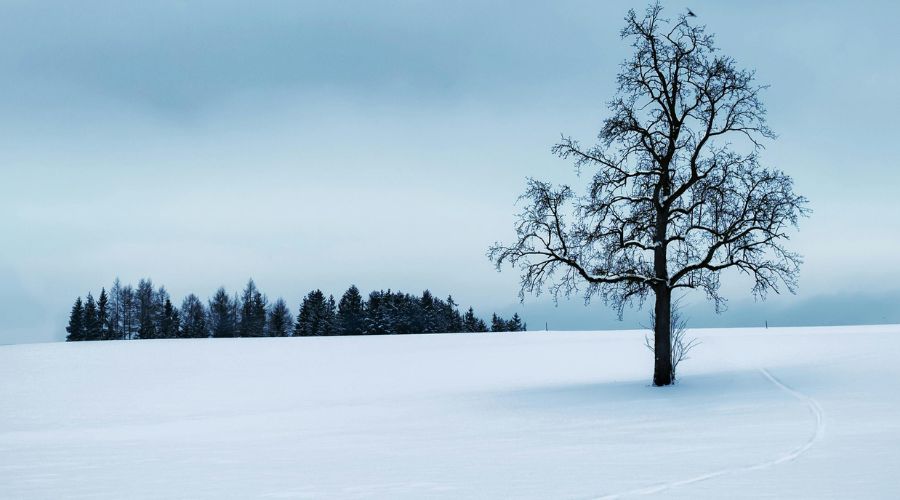Essential Gear for Winter Landscape Photography

Choosing the Right Camera and Lenses
First things first, grab a camera that won’t throw in the towel when the mercury drops. In short, a camera with good landscape photography features is what you need.
DSLRs and mirrorless cameras with weather sealing are your best buds ’cause they can handle the chill like champs. Pick lenses with a wide angle for those epic, sweeping shots or a telephoto to capture frosty details from afar.
But hey, remember, cold fingers and tiny buttons don’t mix, so user-friendly controls are a must.
Importance of Tripods and Remote Shutters
Now, don’t let shivers shake up your shots. A sturdy tripod is your steadfast pal, keeping your camera still as a frozen lake.
And a remote shutter? That’s the secret sauce for snapping pics without laying a finger on your camera – no chance of camera jiggle or frostbite here!
Protecting Your Gear from the Cold and Moisture
Oh, and don’t let Jack Frost nip at your gear. Insulate your precious camera with covers and cases that scoff at the snow.
And those silica gel packets? They’re not just for decoration – pop ’em in your camera bag to keep moisture at bay like a tiny army of dryness elves.
Additional Accessories for Comfort and Convenience
Here’s a hot tip: pack some hand warmers to toast up those digits – you can’t shoot if you can’t feel your fingers!
Also, bring extra batteries ’cause they drain faster than a tub with a leak in the cold. And remember, slipping on ice is no joke; wear boots with a grip that could rival a mountain goat!
Armed with this gear, you’re all set to brave the elements and capture the serene beauty of a snow-kissed landscape.
Preparation Before Heading Out into the Snow
To capture those snowy masterpieces, how to shoot winter landscape in the snow demands a touch of pre-shoot prepping. Here’s the scoop on gearing up.
Dressing Appropriately for Winter Conditions
Now, don’t just throw on a sweater and call it a day. You’ve got to dress like you’re meeting Old Man Winter himself! Think layers, my friend, lots of ’em. Slip into moisture-wicking undergarments, get cozy in a fleece mid-layer, and top it off with a waterproof shell.
Let’s not forget the toasty trifecta: a warm hat, gloves you can shoot with, and insulated boots. Trust me, your fingers and toes will thank you later.
Scouting and Planning Your Locations
Before you face the flurries, get the lay of the land. A little birdy – or a local weather app – can tell you where the snow’s having a ball.
Keep your eyes peeled for spots where Mother Nature’s showing off: think frosted trees, icy rivers, or snow-capped hills. A map or a photography app can be your best pals in finding picture-perfect scenes.
Understanding Weather Patterns and Light Conditions
Heads up! The snowy playground is unpredictable, so read the skies like a book. Early morning or late afternoon sun can sprinkle magic on your winter wonderland, casting shadows and textures you just won’t see midday.
And remember, clouds can be the drama queens of the sky – they can totally change the vibe of your shot. Keep a watch on the forecast, but be ready to pivot. Sometimes the weather has a plot twist!
Let loose and have fun with winter photography! Just keep these tips handy, and you’ll be well-equipped to let the good times roll and freeze them in a photo!
When you’re ready to shoot winter landscapes in the snow, your camera settings are key to capturing the icy magic. Trust me, the right settings can make or break your winter wonderland snaps.
Camera Settings for Winter Landscape Photography
Get a grip on your camera settings as they can be slippery when wet—or cold, in this case. You’ll want to have a few tricks up your sleeve (or in your camera bag) to snag those frosty scenes with finesse.

Adjusting White Balance for Snowy Scenes
Snow can be a real trickster, sometimes looking blue or grey in photos.
To keep snow looking as white as your granny’s hair, play around with the white balance. Fiddle with it until the snow looks like a fresh blanket just waiting for snow angels.
Optimal Exposure Settings for Bright Winter Landscapes
Winter light is a double-edged sword. Keep your exposure in check, else you’ll end up with photos as blinding as a glare off an icicle. Aim for a balance that says “crisp winter day” rather than “squinty-eyed snow blindness.”
The Role of ISO in Low Light Conditions
Low light settings can be as elusive as a snowflake in a blizzard. Jacking up your ISO might seem like a good idea, but it’s a slippery slope. Too high and your picture will have more noise than a snowball fight between rambunctious kids.
Using Histograms to Avoid Overexposure
Keep an eye on your histogram like you would watch for ice patches on the sidewalk.
It’s a handy-dandy guide that’ll help you avoid washing out your winter scenes with overexposure. Think of it as a weather forecast for your photographs—helpful and preventative.
With these tips tucked into your camera bag like hand warmers, you’re all set to capture the winter scenery without getting left out in the cold.
Compositional Techniques for Winter Landscapes
Ready to shoot winter landscapes that’ll freeze your socks off – in a good way? Grab your camera; let’s make some frosty magic happen!

Incorporating Leading Lines and Natural Patterns
Let it snow, let it snow, let it lead the eye! Snowy paths and frosted branches are nature’s way of saying, “Shoot here!” These lines draw viewers into your photo like bees to honey.
Spot a fence weaving through the snow or icicles hanging in a row? Snap that shot! They’re your yellow brick road to a whimsical winter wonderland.
Working with Color Contrasts and Monochrome Scenes
Think black-and-white photography got lost with dinosaurs? Think again! Winter’s the perfect time to play with a monochrome palette.
Bright berries on a sea of white; a cardinal perched on an icy branch – these pops of color contrast build a scene that stands out sharper than a snowflake’s edge.
The Power of Simplicity in Snowy Landscapes
Sometimes, less is more – especially with snow scenes. A lone tree in an endless snowy field whispers stories of resilience. Catch that solo act on camera, and you’ve got a minimalist masterpiece that speaks volumes without saying a peep.
Finding Unique Angles and Perspectives
Bend down, tiptoe, or circle around – finding a fresh angle can turn an ordinary snowdrift into a work of art.
Ever seen the underbelly of a snow-blanketed pine tree? Get down low and capture that untapped view. It’s like finding Narnia in your own backyard!
With these tips up your puffy coat sleeve, you’re set to turn winter’s chill into photographic thrills.
Capturing the Essence of Winter: Timing and Light
When you’re eager to shoot winter landscapes in the snow, remember the old saying, “timing is everything.”
The particular time of day you choose can make or break those snowy snapshots. But don’t sweat it; proper timing paired with the right light will have you capturing those chill vibes like a pro.

Maximizing the Golden Hours
Right off the bat, you’ll want to aim for the golden hours – that’s dawn and dusk to you and me. The light is low, soft, and, well, golden.
The shadows are longer and the contrasts less harsh, giving your photos a kind of glow that can’t be beat. Shoot during these times, and you might just find your winter wonderland looking like it’s straight out of a holiday card.
During these golden hours, the sun’s at a perfect angle, like it’s playing peek-a-boo with the horizon, and that can turn an ordinary blanket of white into a dazzling display of orange and pink hues.
It’s like Mother Nature’s serving up a scoop of sherbet sky, so scoop it up with your lens and get ready for some “oohs” and “aahs” from friends.
Long Exposure Photography for Dramatic Effects
Got a tripod? Great, ’cause it’s about to be your best buddy for long exposure shots.
Long exposure can turn a gust of wind through snow-covered pines into a ghostly blur, or make a babbling brook amidst ice into a silky ribbon. Just slow down that shutter speed, and you’re on your way to capturing winter in a way that’s cooler than cool – it’s ice cold.
The trick with long exposure is balance. You’re playing with light like a DJ with a mix, so twist those settings until you’ve got it just right—no overexposed highlights or murky shadows.
It’s all about letting that shutter stay open long enough to dance with the light, but not so long that your photo’s blown out like a snowman in a blizzard.
Night Photography and Capturing Snow under the Stars
When the sun dips down and you think it’s time to pack up, hang in there ’cause the show’s not over.
Night photography in the snow is like opening a surprise present – you might just be wowed by what you get. With the stars overhead, your snowy landscape transforms into a scene out of a fantasy novel.
Here’s the kicker: you’ll need patience and warm gloves. With nighttime shots, your camera’s going to take its sweet time soaking up those starry skies. Pump up the ISO a bit but keep it reasonable – you don’t want grainy shots that look like they’ve been sprinkled with more snow.
Heads-up, a full moon can be your silent partner in crime for these midnight escapades. It’ll splash silver light all over the snow, giving you enough illumination to capture the magic without the need for a flashlight dance.
Advanced Techniques for Creative Winter Photography
To shoot winter landscape in the snow like a seasoned pro, there are a few advanced tricks you can pull out of your hat.
It’s about adding a dash of spice to the stew—true, capturing what’s there is great, but what about making those frosty scenes pop out even more?
Grab your gloves and let’s dive into some cool photography techniques that’ll make your winter snaps the talk of the tinsel town!
Using Filters to Control Reflections and Glare
Snow is a tricky fellow; it loves to bounce light around like a disco ball, doesn’t it?
Here’s a little magic trick for you: slap a polarizing filter onto your lens. This nifty gadget cuts down on the shimmer and reflections. Think of it as sunglasses for your camera—suddenly, that snowscape is not blinding you with glare, and those blue skies are singing the blues in the best way.
Oh, and don’t forget a neutral density filter when capturing movement, like the dance of a cascading, partially frozen waterfall. It’s like freezing time without needing superpowers!
Experimenting with Snowflakes and Ice Patterns
If you’ve ever seen snowflakes up close, you know they’re the ice-queens of patterns. To capture their intricate designs, get yourself a macro lens. It’s like a magnifying glass that lets you see a world usually hidden to the naked eye.
You’ll find each snowflake is a masterpiece, and with a steady hand, you can immortalize these fleeting ice sculptures. Talk about a cool addition to your portfolio!
Introducing Wildlife into Your Winter Landscapes
Picture this: a cardinal, a flash of red against the wintry white. Wildlife can turn a good winter landscape into a great one. Patience is key. Be still as a statue, and keep those eyes peeled. And when a critter struts into the scene—snap!
Just remember, while you’re waiting for Mother Nature’s creatures to grace your frame, it’s tempting to imitate a popsicle.
Don’t forget the thermos of hot cocoa to keep you toasty. When you finally get the perfect shot, it’s worth the wait—and the chill!
Wrap Up Your Winter Wonderland Adventure
Alright, hotshot, you’ve braved the cold and your fingers are probably icicles by now, but wasn’t it worth it? You ventured into the snowy abyss with a camera in hand and a fire in your heart – eager to capture the icy beauty before anyone else even had their first cup of coffee.
Remember, the tips from our guide on how to shoot winter landscape in the snow are your trusty companions – use them wisely, and you’ll be crafting snowy masterpieces like a pro.
Keep in mind those early morning treks for the soft glow of sunrise on the snow. Think back to all those compositions you framed, making sure each one told a story as chill as the winter air itself.
Don’t forget the fun you had experimenting with exposure to get that snow looking crisp and not like a washed-out blob.
What about those brave moments when you stepped off the beaten path to find untouched snowy scenes? That’s the spirit of a true winter landscape photography explorer.
Now go share your stories, show off your frosty gems, and let everyone see the winter wonderlands through your lens.
Frequently Asked Questions
What’s the best time of day to capture stunning winter landscapes?
Crack of dawn, buddy! That’s when the light’s fresh and the world feels like it’s all yours. Plus, the golden hour glow can really make your snow photos pop.
How do I keep my camera from freezing while I snap away?
Dress your gear in layers, just like you would. Keep spare batteries toasty in your pockets and give your camera a cozy break now and then.
Any tips for dealing with the blinding white snow in my shots?
Overexpose a bit. I know, seems wrong, but trust me, it’ll save your snow from looking dull and gray. And check your shots right away to make sure they shine just right.
What should I do if my fingertips start to turn into icicles?
Get thee some gloves! The kind with those nifty removable fingers; they’ll keep you snapping without freezing off your digits.
Are there any secrets for composing a winter landscape photo?
Find a standout tree or a quirky snowdrift. That’ll be your star—then let the endless white do the stage-setting around it.
Does the snow affect the color in my images?
Oh, you bet. Snow’s a sneaky reflector and can toss weird hues into your shot. Bold, plain colors work best to shine through the snowy glare.
Should I be worried about my gear when moving from warm indoors to the frosty outdoors?
Go slow and steady. Let your gear chill a bit inside your bag before you unleash it into the cold. No foggy lens drama then!
Is it worth using any special filters for winter photography?
Polarizing filters are your new best friends. They’ll cut through the glare and make those icy blues and whites pop.
Can I capture good winter landscapes with just my smartphone?
Sure can! Just keep it warm and battery happy, and swipe on some photo magic with those easy editing apps.
What’s the most important thing to remember when photographing in the snow?
Have fun out there! Frolic a bit, feel the chill, and click away. Your snowy adventure is what’ll make those photos cool and memorable.

